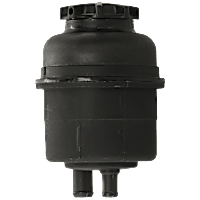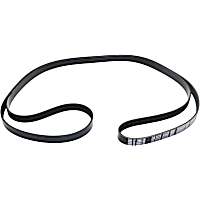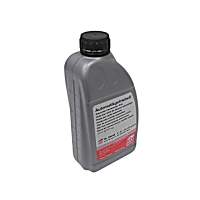Checking under the hood of your car periodically can head off problems before they become costly. Even if you don’t particularly have any interest in auto repair, these are simple checks that every driver must know to make sure their vehicle stays ready for the road.
Safety Reminders
Before anything else, it’s best to check your owner’s manual and/or service manual to review the manufacturer’s recommended underhood checks.
If the engine has been running for any length of time, wait for it to cool down as the engine compartment can get very hot. Except for checking the transmission fluid level, all checks should be done while the engine is turned off.
Do not put your hands near any belts or fans while the engine is running. If you are not comfortable with touching a hot or running engine, then just do the checks that can be done with the engine cold and have someone else do the rest.
8 Things You Should Periodically Check Under the Hood of Your Car

Make it a habit to check these eight things before heading out for work or going on a trip.
Checking Your Engine Oil Level
To check the oil level, make sure that your vehicle is parked on level ground and that engine has been off for several minutes. If you’ve already started your vehicle, turn it off for about two minutes before checking the oil level.
Remove the oil dipstick and clean it with a paper towel or a rag before reinserting it all the way down.
Remove the dipstick and check where the oil level touches the indicator. You will usually see a mark for “Full” and another mark for “Add.” If oil needs to be added, use the specified oil in your owner’s manual and add it through the oil fill opening in the engine and not through the dipstick hole. Always make sure that you don’t go beyond the full mark.
A visit to your mechanic may be needed if you’re having to top off your engine oil more often than usual. You should also consult a professional if there are signs of moisture inside the gas cap or the oil appears foamy or give off a strong gasoline smell.
Checking Your Transmission Fluid Level
Make sure the vehicle is parked on a level surface before checking the fluid level.
How to check the transmission fluid level varies depending on the vehicle.
For example, Hondas are checked with the engine off. Meanwhile, some Chrysler vehicles for certain years are checked in neutral, and checking while they’re in park will give you inaccurate fluid level information.
You also need to consider the fluid’s temperature. For most vehicles, it should be up to operating temp, but some will specify a cold range and warm or hot range. If it’s indicated that is must not be in cold range, then it must be at operating temp or you will over fill the fluid.
The fluid should be at normal operating temperature, which means the vehicle should have been driven for several miles before conducting checks.

Start the engine and move the gear selector to all gear positions and return to park or neutral (as instructed by the vehicle manufacturer). Remove the transmission dipstick and wipe it off with a clean cloth. Reinsert until fully seated before removing it and checking the fluid level.
Look up what color your transmission fluid should be. If it’s darker than it should be, that might indicate severe indication due to high temperatures. If the fluid gives off a burnt or rancid smell, it’s best to get your transmission checked by a mechanic.
Checking Your Brake Fluid Level
Most vehicles come with a brake fluid reservoir, which allows you to view the brake fluid without removing its cover. The proper level should be between the minimum and maximum levels indicated on the plastic reservoir.
Older vehicles may be equipped with a metal or nontransparent plastic reservoir which requires the removal of the cover to check the brake fluid.
Most vehicles have enough reservoir space to hold enough brake fluid to last between brake lining intervals. If the fluid is near the minimum park, this usually indicated that the brake lining are low.
The brake fluid can read low if you have less than 50% for the front and rear linings. Meanwhile, if the fluid is low while the linings are still fine, then you might be dealing with a leak.
If the brake fluid level drops noticeably over a short period of time or goes down to about two-thirds full, have your brakes checked as soon as possible.
Checking Your Power Steering Fluid
The power steering fluid reservoir usually has a cap labeled “power steering” or an icon of a steering wheel. Twist the cap counterclockwise and use the attached dipstick to check the level of the power steering fluid.
If your vehicle suffers from a low power steering fluid level and you have to top it up more than once or twice a year, then have the system checked for leaks.
Checking the Coolant Level
Look for the cooling system reserve tank, somewhere near the radiator. The reserve tank will have two marks on the side of it. Some vehicles have “FULL HOT” and “FULL COLD,” while others have “minimum” and “maximum.”
The coolant reservoir is usually translucent, so you can see the fluid level without opening it. Coolant should be clean and have the same color as it did when it was new.
Milky-looking coolant may be a sign of a bad engine gasket. If the fluid appears dark or muddy, it needs to be replaced.
Inspecting Your Car Battery
Check the top of the battery to make sure it is clean and dry. Make sure it is properly mounted and that there are no signs of damage or leakage on the case.
Inspect the terminal connections for any signs of corrosion. If the top of the battery becomes damp or corroded soon after cleaning, have the charging system and battery checked by your mechanic.
Checking Your Windshield Washer Fluid
The windshield washer fluid level should be checked regularly and refilled when needed. This fluid is actually a mix of water and methanol which prevents the liquid from freezing and helps it dissolve bugs on the windshield. Never dilute it during winter months to insure that it retains its antifreeze protection. Also, make sure you don’t fill it with straight water.
Inspecting Your Drive Belts & Hoses

Belts are used to drive a number of components on an engine including the water pump, power steering pump, air conditioner, alternator, and emission control pump.
Inspect the belts for cracks and tears. Check for fraying and looseness as well. If you notice the latter, you likely need to tighten up the belts.
Inspect the belts for cracks and tears. Check for fraying and looseness as well.
–Anthony Harlin, ASE Certified Master Automobile Technician
In most cases, a mechanic will check your belts and hoses when you bring in the car for an oil change. It is recommended that all belts be replaced every four to seven years to prevent them from breaking or getting tangled.
Some later model cars have a single serpentine belt that handles everything. This type of belt looks flat on one side with several ribs on the other side. You should check the ribbed side for signs of dry and cracked rubber.
Hoses should be checked visually and by feel. You are looking for dry cracked rubber, especially at the ends where they are attached. You should also check the ends for any signs of ballooning and pay attention for parts that feel soft or spongy.
The Bottomline
Over the years, vehicle manufacturers have made it easier for drivers to conduct maintenance on their vehicles. Checking vehicle fluid levels and keeping your battery clean are tasks that are straightforward enough even for new drivers.
By conducting spot checks in between your scheduled maintenance, you may be able to spot problems before they become too time-consuming and expensive to repair. Who knows? This might even spark your interest in DIY auto repair.
Products Mentioned in this Guide
Any information provided on this Website is for informational purposes only and is not intended to replace consultation with a professional mechanic. The accuracy and timeliness of the information may change from the time of publication.

 Power Steering Reservoir
Power Steering Reservoir
 Serpentine Belt
Serpentine Belt
 Automatic Transmission Fluid
Automatic Transmission Fluid














